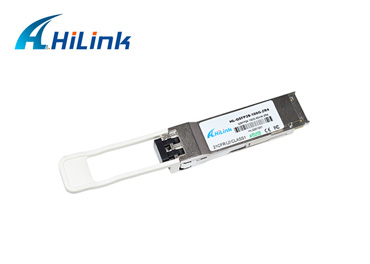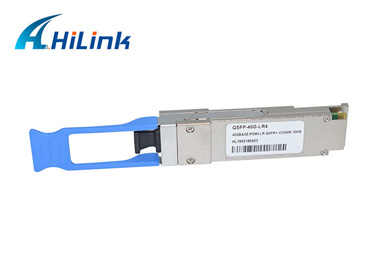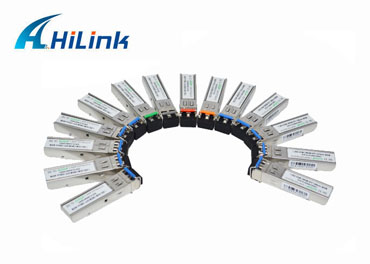What Are SFP Ports Used for?
Aug. 08, 2022
Small form factor pluggable or SFP devices are hot-swappable interfaces used primarily in networking and storage switches. SFP ports and SFP modules on the switch enable the switch to connect to different types and speeds of fiber and Ethernet cables.
A small form factor committee of major equipment vendors created the SFP specification, which was first published in 2001. SFP modules built to the initial specification supported data rates of up to 1 Gb. Since then, the specification has been updated to support higher data rates.
Almost all enterprise-class switches include two or more SFP ports, enabling them to be part of a ring or star network topology distributed between buildings, floors, or zones, and connected by fiber optic cables.
Hilink 100G QSFP28 ZR4 Optical Transceiver
SFP Media Support
SFP module types support single mode and multimode fiber as well as Cat5, Cat6, Cat6a, and Cat7 twisted-pair copper. SFP modules designed for fiber optics support multiple wavelengths up to 2 km for multimode and up to 40 km for single mode.
Connections using Cat6a are limited to approximately 100 m, but crosstalk between adjacent cables can limit the actual maximum distance. Cat7 cables include additional shielding to reduce crosstalk, but they can be difficult to install due to increased cable thickness.
The enhanced SFP (SFP+) specification was released in 2006 and further updated in 2011. sFP+ modules support rates up to 16 Gbps. As with earlier SFP models, they support both fiber and copper, but copper interconnects are limited to 10 m at 10 Gbps. The SFP+ specification supports single-mode fiber interconnects up to 40 km, but some vendors support distances up to 80 km.
SFP+ modules are specified for Fibre Channel (FC) up to 8 Gbps, but some vendors support rates up to 16 Gbps. SFP+ also supports WAN connectivity based on the Optical Transport Network Specification OTU2.
Some SFP modules, such as the GLC-BX-D and GLC-BX-U, support digital optical monitoring, allowing end users to monitor SFP performance in real-time, tracking metrics such as temperature, optical output power, optical input power, transceiver supply voltage, and laser bias current.
40G QSFP LR4 Optical Transceiver
SFP Ports vs. RJ45 Ports
While SFP and SFP+ modules are relatively inexpensive, 1 Gb and 10 Gb connections are more expensive than RJ45 connections, which use copper wire and are generally less expensive than fiber. In addition, RJ45 ports are typically built into the switch, so customers do not need to purchase additional parts.
The decision to use an RJ45 or SFP port on a switch depends on the distance between the connection endpoints. If the endpoints are close enough to use copper wire, then it is less expensive to use RJ45. If the distance is large enough to require fiber, then the team should use an SFP port. Fiber is also a better option where the cables must be run side by side for a distance, which makes crosstalk between copper cables an issue.
The combined SFP ports on the switch support both SFP and RJ45 ports using a single interface. However, users cannot use both ports at the same time, as only one type can be used at a time. These combo ports allow IT teams to choose the connection type that best meets the application, network, cost, or distance requirements.
Dual Fiber 155m 4.25g SFP Transceivers
SFP Types and Updates
Vendors are continually updating the SFP specification to support higher rates and more interconnect types. 25 Gbps is supported on both multimode and single mode fiber for SFP28. BiDi SFP supports bi-directional communication over a single fiber. While other SFP types require two fibers - one for transmitting and one for receiving - BiDi SFPs use different wavelengths, one for transmitting data and the other for receiving.
Compact SFPs support two bi-directional links using the same interface module - using two fibers, each carrying bi-directional traffic. Quad SFP (QSFP) modules support four fibers carrying Ethernet, FC or InfiniBand. Most available QSFP modules can support speeds of up to 200 Gbps. Both octal SFP and QSPF dual density have recently become available and scale data rates up to 400 Gbps.
Currently, 400 Gbps is the highest rate available in commercial products, although standards and products are being developed to support 800 Gbps. SFP technology has demonstrated the ability to evolve as demand increases, and will likely continue to evolve to support higher rates.















